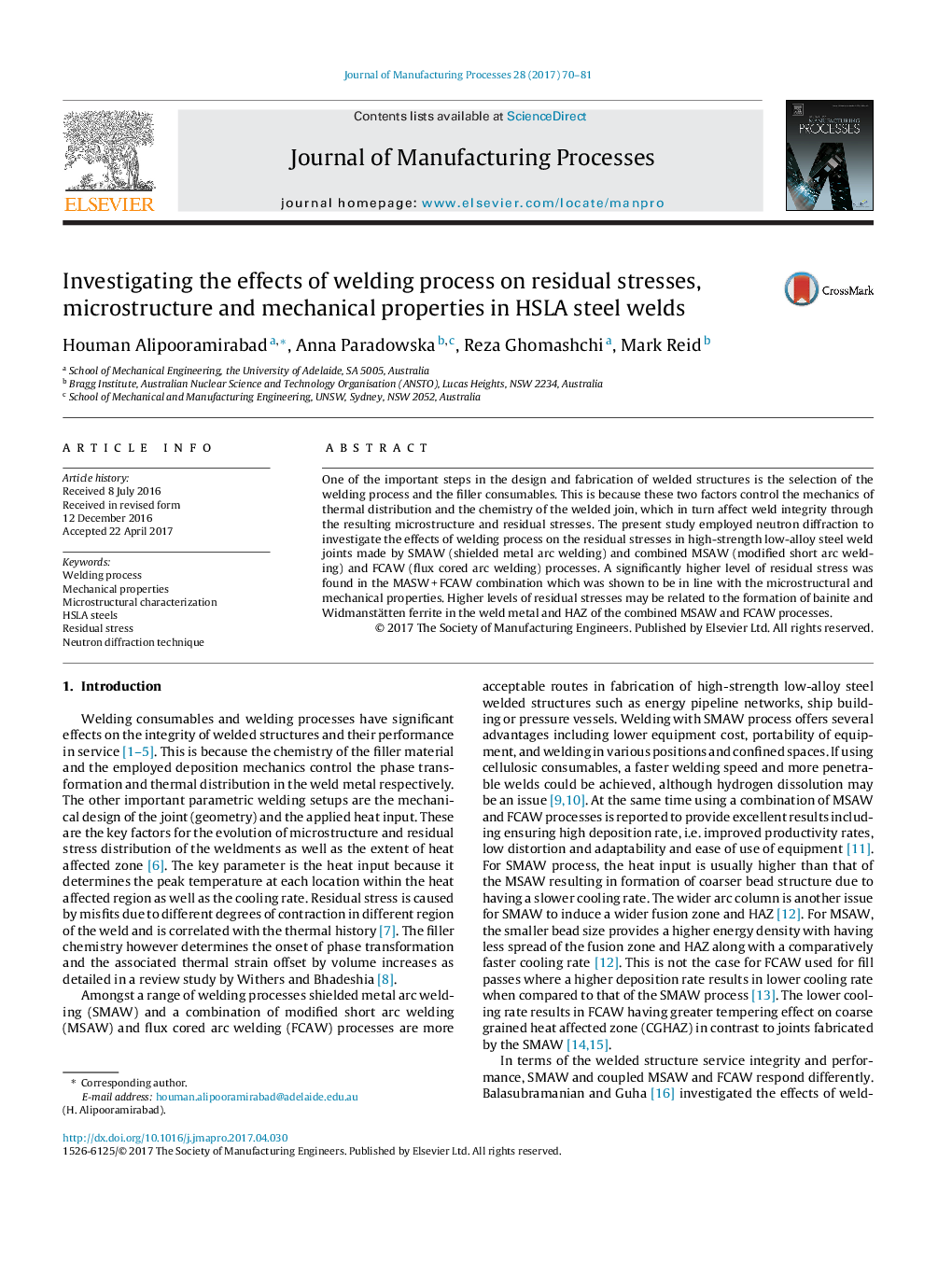| Article ID | Journal | Published Year | Pages | File Type |
|---|---|---|---|---|
| 5469321 | Journal of Manufacturing Processes | 2017 | 12 Pages |
Abstract
One of the important steps in the design and fabrication of welded structures is the selection of the welding process and the filler consumables. This is because these two factors control the mechanics of thermal distribution and the chemistry of the welded join, which in turn affect weld integrity through the resulting microstructure and residual stresses. The present study employed neutron diffraction to investigate the effects of welding process on the residual stresses in high-strength low-alloy steel weld joints made by SMAW (shielded metal arc welding) and combined MSAW (modified short arc welding) and FCAW (flux cored arc welding) processes. A significantly higher level of residual stress was found in the MASWÂ +Â FCAW combination which was shown to be in line with the microstructural and mechanical properties. Higher levels of residual stresses may be related to the formation of bainite and Widmanstätten ferrite in the weld metal and HAZ of the combined MSAW and FCAW processes.
Keywords
Related Topics
Physical Sciences and Engineering
Engineering
Industrial and Manufacturing Engineering
Authors
Houman Alipooramirabad, Anna Paradowska, Reza Ghomashchi, Mark Reid,
